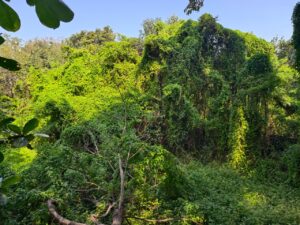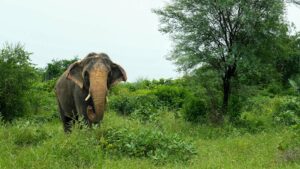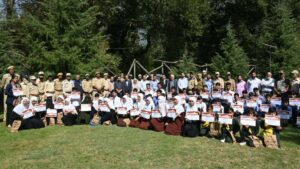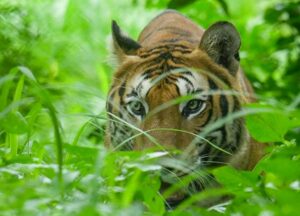At the very heart of Wildlife SOS centres, where rescued elephants, bears, leopards and other species find a second chance at life to thrive and heal, and where veterinarians and caregivers make that possible, there is another team, working relentlessly behind the scenes. Meet our talented education officers. While veterinarians and caregivers provide medical treatment and care to our rescued animals, the education team relays vital knowledge to transform minds, nurtures compassion and ensures that a deeper understanding and respect for wildlife grows among people.
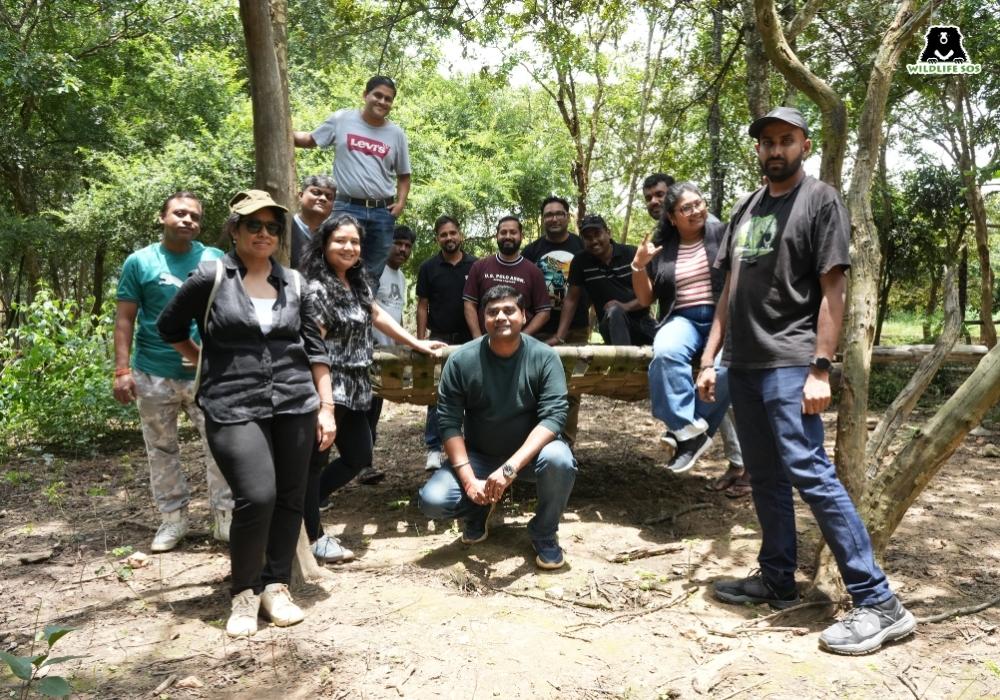
Education and awareness have always been an integral and crucial cornerstone of Wildlife SOS’s mission. Rescue and rehabilitation can heal individuals, but to truly end cruelty from its roots, a shift in mindsets is needed. We must change how people see non-human animals, not as commodities or sources of entertainment, but as intelligent, emotional beings who deserve equal dignity and respect. This is where our education officers come in to bridge the gap. They are multitaskers, transforming effortlessly from the role of guides to mentors to storytellers and, most importantly, the connectors between animals and people.
Spreading Conservation Awareness
Every rescued animal carries a story, and our education officers are the voices that make those stories resonate. Whether it is the story of a sloth bear once forced to ‘dance’ on the streets, or an elephant that endured decades of pain walking on hot tarmac, these journeys are not only testimonies of suffering but also of resilience. Our education officers ensure that, alongside the cruelty, the world also hears about their survival, healing, and the hope found in rehabilitation.
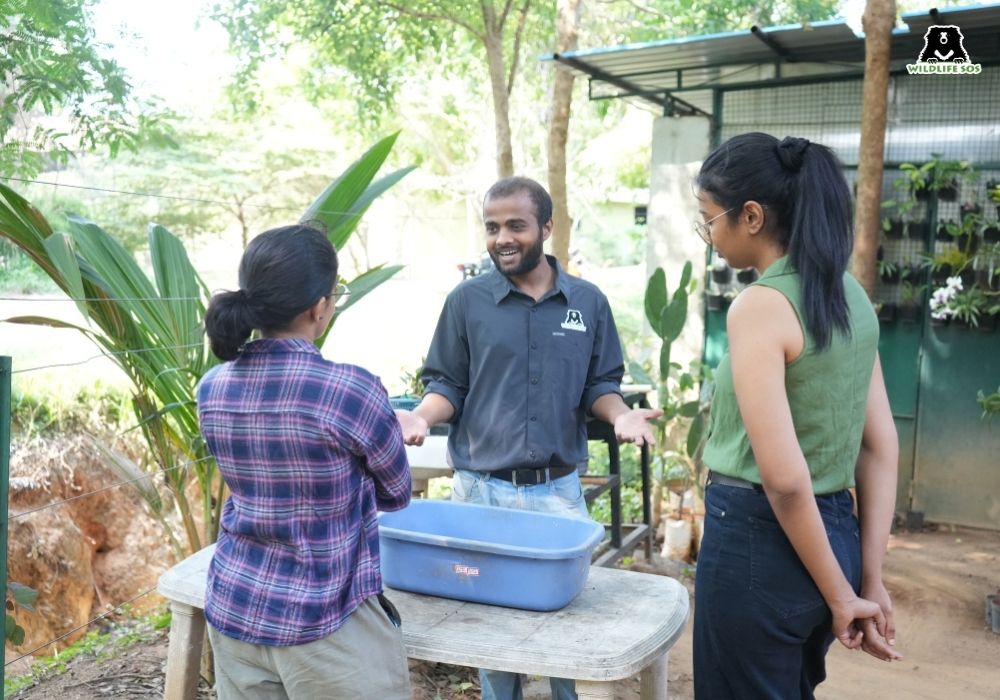
Among our education officers are Mr. Pranav Pradeep and Mr. Krishnamurti, who often lead interactive sessions at Bannerghatta Bear Rescue Centre (BBRC) in Karnataka or in schools, sharing the struggles of the sloth bears rescued from entertaining as ‘dancing’ bears, trafficking or conflict. They master the art of introducing animal behaviour from a scientific and rational perspective. Joining them is Ms. Damini Kulkarni, who engages with children and college students alike to bust myths, break the misconceptions about sloth bears, and encourage co-existence with wildlife. Through different types of outreach, painting competitions and storytelling, she shows how even the smallest acts of kindness can ripple into families and communities alike.
While Mr. Krishnamurthy and Mr. Pranav remind their audience of how beneath a sloth bear’s strong presence lies a gentle spirit waiting to be understood with empathy rather than fear, Ms. Damini believes that knowledge can be expressed creatively through the art of storytelling. Their narratives and methods have been highly successful in sparking curiosity and nurturing empathy in people, including children, who are encouraged to recognise animals as sentient beings that deserve to be conserved and protected.
The trio thus brings across aspects of animal welfare and rehabilitation, helping people to replace indifference with awareness. A visitor who comes in curious often leaves highly inspired after interactive discussions that take place while witnessing the rescued bears under our care. We have noted how their appreciation of what wildlife truly needs translates into a renewed will and determination to be part of the solution.
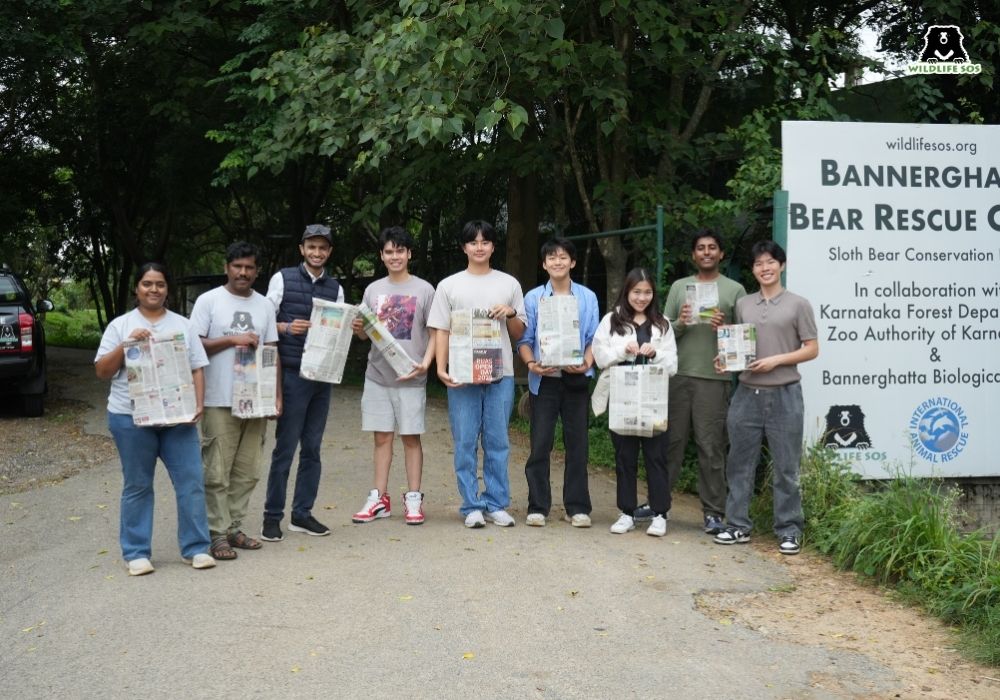
Children are often the most open-hearted learners who come with a thirst for knowledge and a few preconceived notions. When students from local schools visit our Dachigam and Pahalgam Bear Rescue Facilities in Jammu & Kashmir, Ms. Aaliya Mir, Manager & Education Officer with Wildlife SOS, makes sure that compassion is nurtured among them. She also enlightens those living alongside sensitive ecosystems about the animals that live in them.
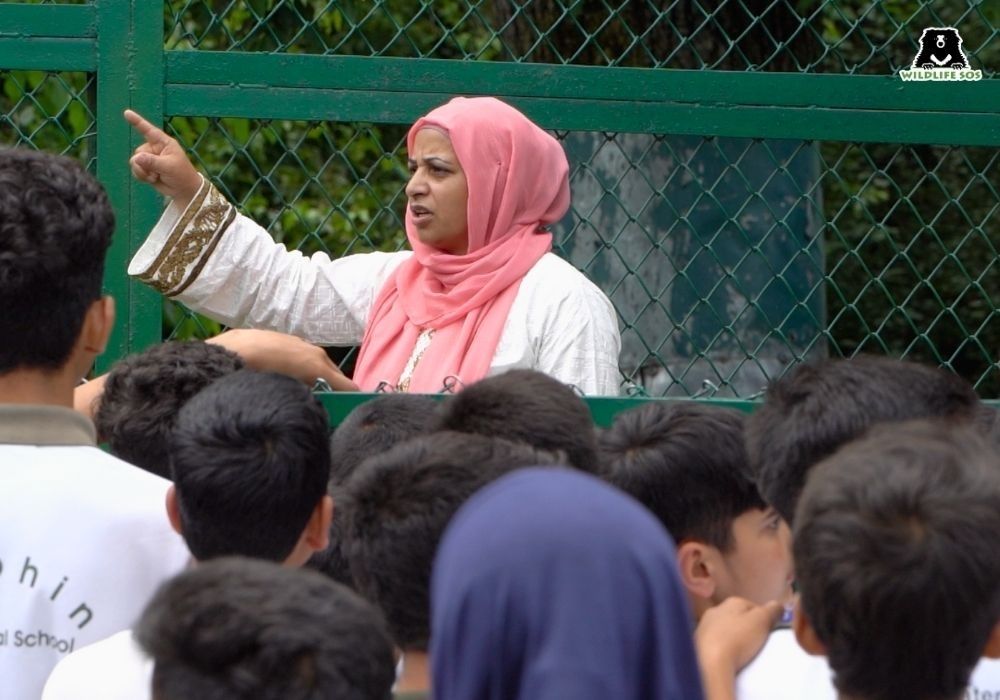
By planting these seeds of awareness in young minds, the education team ensures that the next generation of farmers, teachers, officials, and citizens will carry forward a culture of respect for wildlife.For most people, volunteering at Wildlife SOS is perhaps the first intimate interaction with wildlife that they have ever experienced. Feeding a sloth bear, or preparing enrichment for elephants or just navigating through the rescue centre accompanied by an officer, is in itself a moment to cherish, which can be pretty transformative. This is where our Volunteer & Visitor Coordinator, Mr. Himanshu Sood, steps in. At our Elephant Conservation and Care Centre (ECCC) in Mathura, he ensures that visitors and volunteers leave enriched, enlightened and with impactful learning. He explains that when people understand that elephants are gentle, intelligent beings with emotions, conscious choices tend to prevail, and they start refusing elephant rides at tourist places and stop supporting elephants used for entertainment. Even small shifts in awareness can initiate ethical behaviour towards wildlife. For both those who are visiting or volunteering from India and overseas, their unique and memorable experiences often lead them to become stronger and lifelong advocates for saving and respecting animals, carrying Wildlife SOS’s message across the globe.
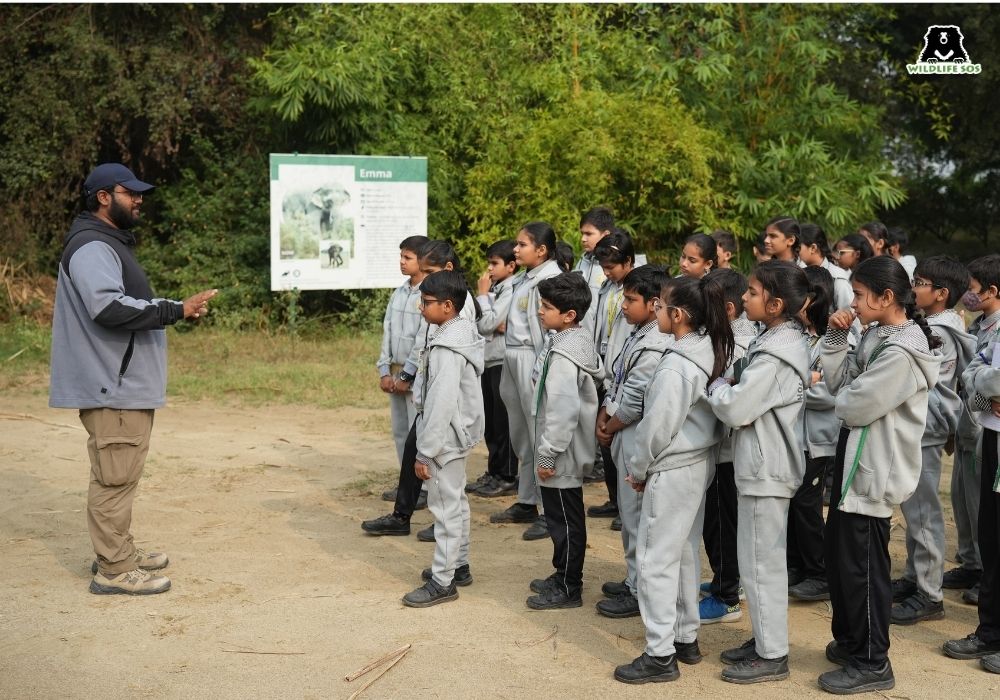
Wildlife tourism can either harm or help conservation efforts. Education officers are determined to ensure it becomes a force for good. By guiding visitors, donors, students, and even celebrities through Wildlife SOS centres, they highlight what ethical tourism truly means. They explain why elephant rides and bear performances are cruel, and why observing animals in sanctuaries or in the wild, keeping distance and without any interference, is a virtuous choice. Through engaging sessions, our education team inspires visitors to carry forward the message of coexistence.
Creating Lasting Resources
Apart from in-person sessions, our education officers also create platforms that extend beyond the centres for a lasting impact. For example, at BBRC, Ms. Damini, Mr. Pranav, and Mr. Krishnamurti have helped develop conservation clubs and activity-based outreach materials that keep children engaged long after their actual visit. In Kashmir, Ms. Aaliya and her team create campaigns that encourage the local communities and children to envision leopards and bears not as enemies, but as neighbours with whom we co-exist and often cross paths. These awareness programmes give people practical solutions and help them find ways to share their environment sensitively with wildlife, such as securing livestock and responding calmly to sudden animal encounters. By weaving knowledge into routines of daily life, our education officers are converting the ‘idea’ of conservation into a lived reality.
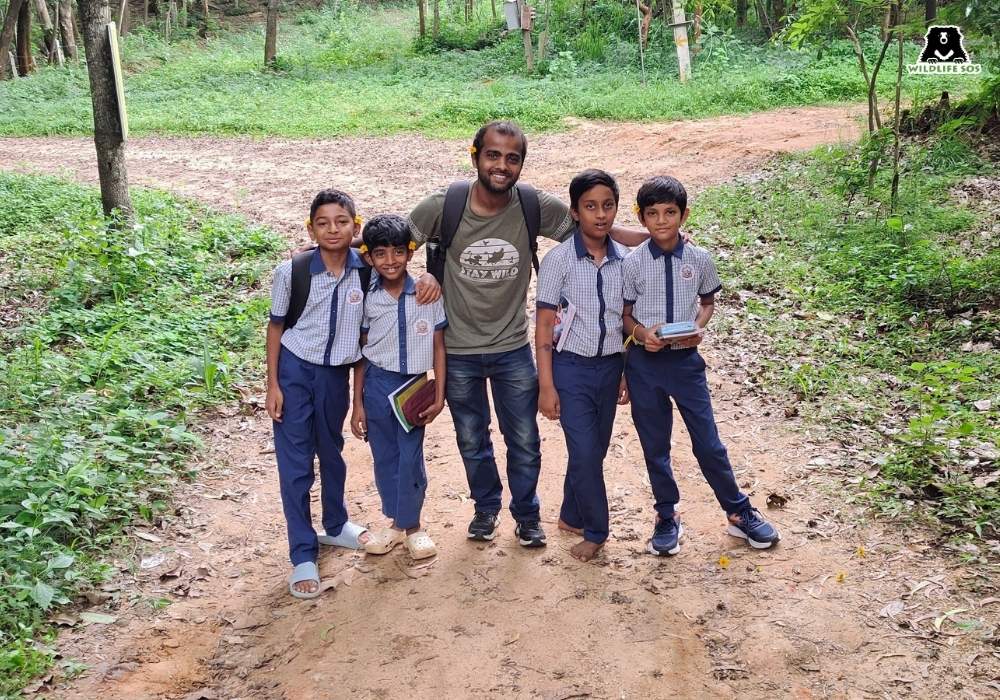
We now know that the role of the education team goes beyond delivering information to include volunteer engagement, but they are also key players in arranging resources for animal care and supporting ongoing welfare efforts. This blend of outreach and education strengthens the broader mission of Wildlife SOS: to rescue animals while reshaping society’s relationship with wildlife. What makes our team truly remarkable is its ability to translate silent suffering into human understanding. A veterinarian may heal an injury, a caregiver may soothe with a gentle touch, but it is the education officers who help visitors understand and see the animal differently — not as an exhibit, but as a living, feeling being. They ensure that every rescue narrative leaves a great impact, that every healing animal inspires a change in perspective, and that wildlife conservation is not just about saving animals, but also about opening up people’s minds about them.
Shaping the Future
Across Wildlife SOS centres in India, the education team is quietly shaping the future of conservation. While officers like Ms. Aaliya, Mr. Pranav, Ms. Damini, Mr. Krishnamurti, and Mr. Himanshu are ensuring that every attendee carries a message of compassion forward, we also have centre heads and field officers who are adding their expertise to this wonderful sphere.
Mr. Mahendra Dhore, Project Manager at Wildlife SOS’s Manikdoh Leopard Rescue Centre (MLRC) in Maharashtra, frequently holds imperative sessions with forest officials and even local people residing closer to jungles to address and mitigate the rising conflict situations with caution and knowledge. Mr. Shivam Rai, Head Coordinator of Elephant Project with Wildlife SOS, guides people through the Elephant Hospital Campus in Uttar Pradesh, India’s 1st elephant hospital, the impact of which makes them willing donors towards a strong purpose. Every member of Wildlife SOS sees education as central to our mission. Every school visit, every workshop, every guided tour plants a seed of needed awareness. And when a child refuses an elephant ride, when a tourist chooses ethical sanctuaries, when a community chooses co-existence over conflict, the real measure of their work stands out.
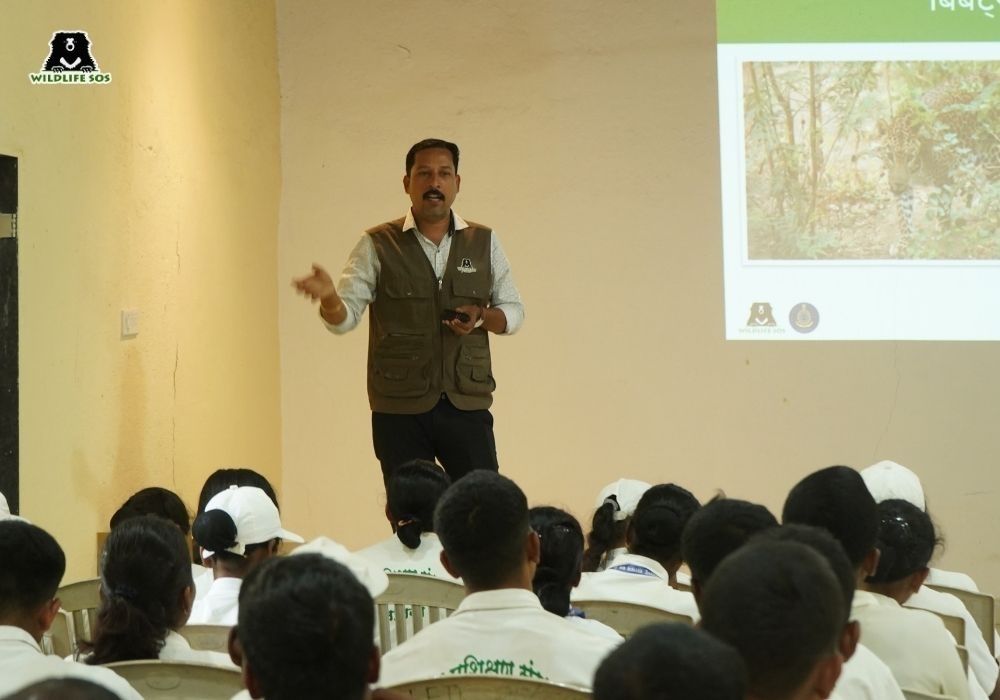
Education does not end at the gates of a rescue centre. It lives in every mind it touches, every story shared, and in every change it inspires. In the long run, it is not just the animals who are rehabilitated, it is society itself.
If you would like to connect with Wildlife SOS to hold informative awareness sessions at your school, university or workplace, kindly email us at education@wildlifesos.org.
Feature image: Wildlife SOS



